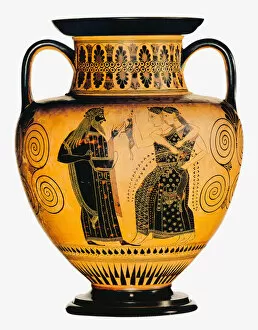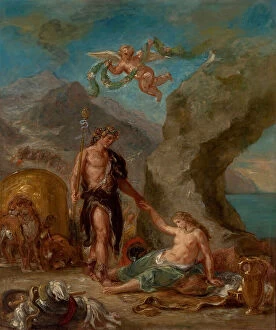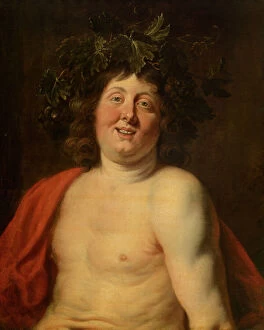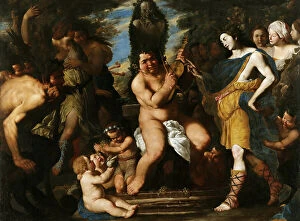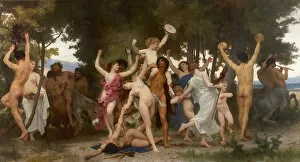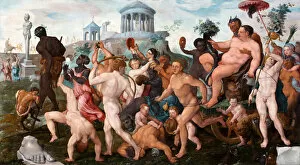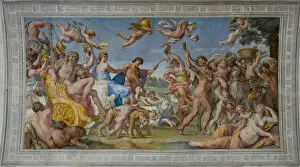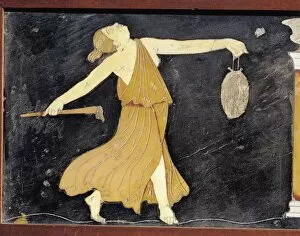Dionysian Mysteries Collection
The Dionysian mysteries, rooted in ancient Greek mythology, revolve around the god Dionysus and his wild and ecstatic rituals
All Professionally Made to Order for Quick Shipping
The Dionysian mysteries, rooted in ancient Greek mythology, revolve around the god Dionysus and his wild and ecstatic rituals. These ceremonies were shrouded in secrecy, known only to initiates who underwent intense rites of passage. Depicted on an Attic black-figured amphora from the 6th century BC, we see Dionysus flanked by two Maenads, female followers who participated in frenzied dances and orgiastic celebrations. This artwork captures the essence of Bacchanalian revelry that characterized these mysterious rites. In Bouguereau's painting "The Youth of Bacchus, " we witness a young Dionysus surrounded by nymphs and satyrs, embodying youthful exuberance and fertility. The scene is filled with vibrant colors and lush vegetation, symbolizing the abundance associated with this deity. "The Dance of Bacchantes" by Delacroix portrays a group of women engaged in a frenetic dance under the influence of wine. Their flowing garments suggest movement as they surrender themselves to the intoxicating power of Dionysus. One cannot overlook Titian's masterpiece "The Triumph of Bacchus and Ariadne, " where the god triumphantly rides a chariot pulled by leopards while Ariadne gazes at him adoringly. This painting encapsulates both passion and ecstasy that are central to Dionysian worship. Another notable representation is Raimondi's engraving "Bacchanalia, " which depicts a chaotic gathering where participants indulge in excessive drinking, dancing, and lovemaking—an uninhibited celebration honoring their beloved god. A fresco showcasing an erotic subject further emphasizes the sensual nature inherent within these rituals. It serves as a reminder that pleasure was not just physical but also spiritual for those initiated into these mysteries. Tintoretto's "Wedding of Bacchus and Ariadne" immortalizes their union, symbolizing the merging of human and divine realms.

